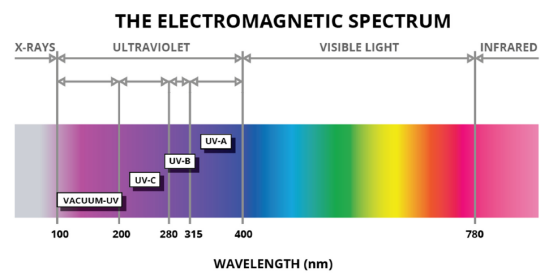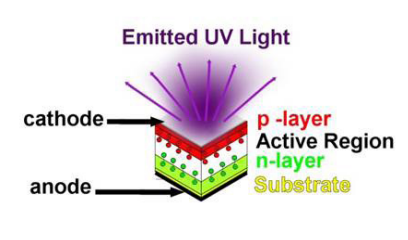
In recent years, Ultra Violet LEDs (UV LEDs) have gained widespread attention and application in the electronic components industry due to their high efficiency and long lifespan. This article will provide a detailed introduction to UV LEDs, including their definition, characteristics and advantages, and various applications.
Catalog
I. What are Ultra Violet LEDs?
II. Types of Ultra Violet LEDs
IV. Characteristics and Advantages
I. What are Ultra Violet LEDs?
UV Light Emitting Diodes (LEDs) are solid-state devices that produce light when an electrical current flows from the positive (p-type or anode) side to the negative (n-type or cathode) side of the circuit. This process occurs at the 'p-n junction.' Each UV LED is designed to emit light within a specific narrow range of ultraviolet wavelengths.
II. Types of Ultra Violet LEDs
The operational wavelength of UV LEDs typically ranges from 10 nanometers to 400 nanometers. Based on their wavelengths, UV LEDs are categorized into three types:
· UVA (320-400nm): Primarily used in curing, fluorescence detection, and photolithography.
· UVB (280-320nm): Mainly used in medical treatments, dermatology, and biological experiments.
· UVC (200-280nm): Known for its powerful sterilization and disinfection capabilities, widely used in water treatment, air purification, and surface disinfection.

△ Color spectrum highlighting UV-A, UV-B, and UV-C
III. Working Principle
The working principle of UV LEDs is similar to that of regular LEDs. When an electric current passes through semiconductor materials, electrons and holes recombine in the junction area, releasing photons. UV LEDs use wide bandgap semiconductor materials such as Gallium Nitride (GaN) and Aluminum Gallium Nitride (AlGaN) to achieve ultraviolet light emission.

IV. Characteristics and Advantages
· High Efficiency and Energy Saving: UV LEDs have higher electro-optical conversion efficiency and lower energy consumption compared to traditional light sources.
· Environmentally Friendly and Safe: They do not contain harmful substances like mercury, making them eco-friendly.
· Long Lifespan: UV LEDs typically have a lifespan of tens of thousands of hours, resulting in lower maintenance costs.
· Compact Size: Their compact design makes them suitable for various precision instruments and devices.
· Fast Response: UV LEDs can be used instantly without preheating, ideal for applications requiring quick responses.
V. Applications
· Curing: UV LEDs are widely used in printing, electronic assembly, and coating curing. For instance, in the printing industry, UV LEDs are used for rapid curing of inks and coatings, enhancing production efficiency.
· Disinfection: UVC LEDs, due to their strong sterilization capabilities, are extensively used in water treatment equipment, air purifiers, and surface disinfectors, particularly in the healthcare sector.
· Medical: UVB LEDs are employed in treating skin conditions like psoriasis and vitiligo, while UVA LEDs are used in photodynamic therapy to help treat cancers and other diseases.
· Detection: UV LEDs are used in fluorescence detection and photolithography, crucial in biomedical fields, semiconductor manufacturing, and archaeology.
· Agriculture: In agriculture, UV LEDs are utilized for sterilization, promoting plant growth, and pest control, thereby improving agricultural productivity and product quality.
VI. Conclusion
As technology continues to advance, the efficiency and stability of UV LEDs will further improve, and their application fields will expand. Especially in environmental protection, medical health, and high-tech manufacturing, UV LEDs are expected to bring more innovation and breakthroughs. In summary, UV LEDs, as an efficient and eco-friendly new light source, are playing an increasingly important role in the electronic components industry. With ongoing technological progress, UV LEDs are poised to embrace a broader development horizon.




